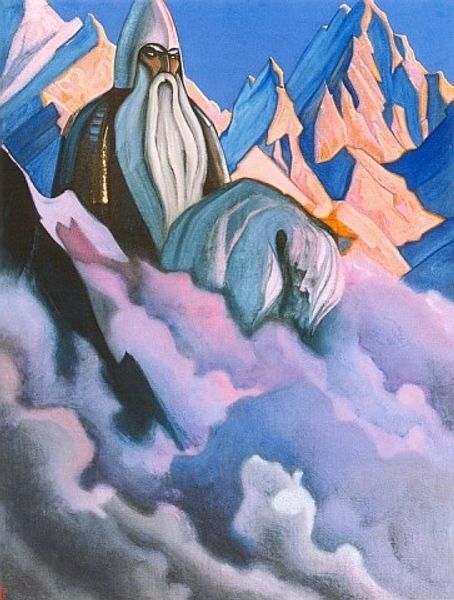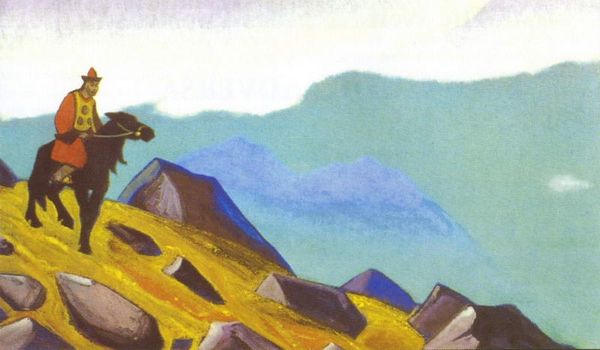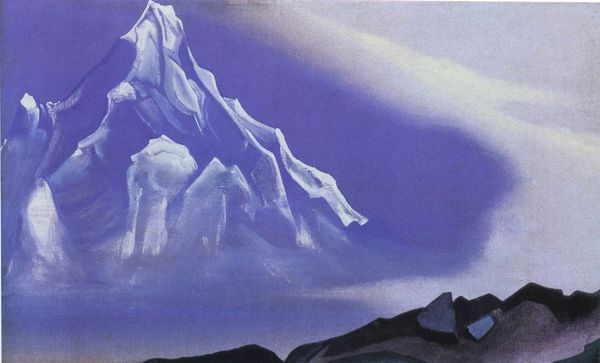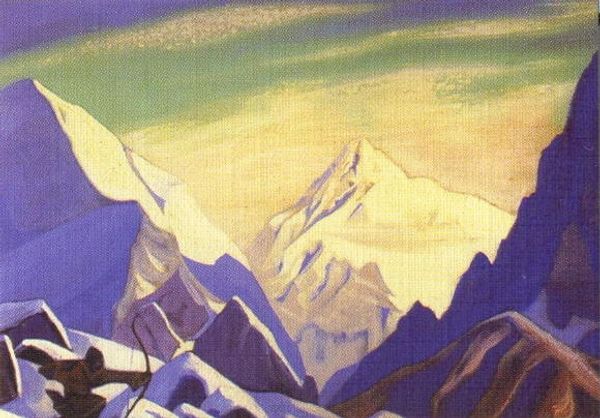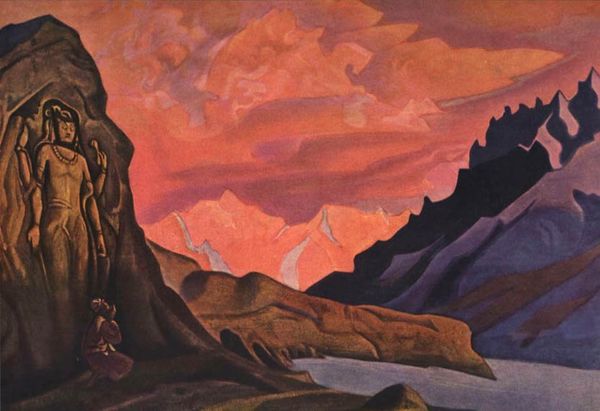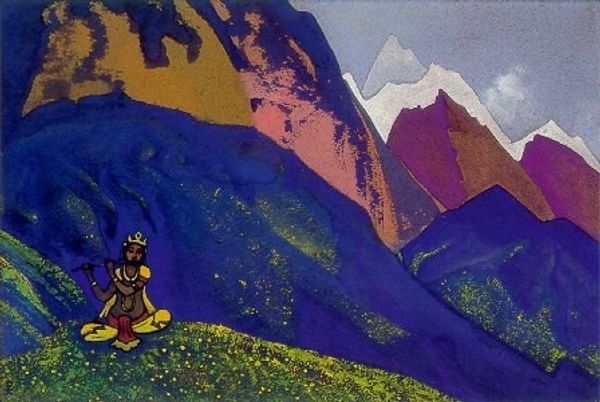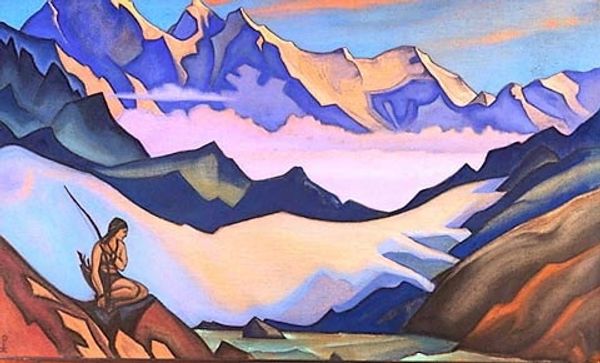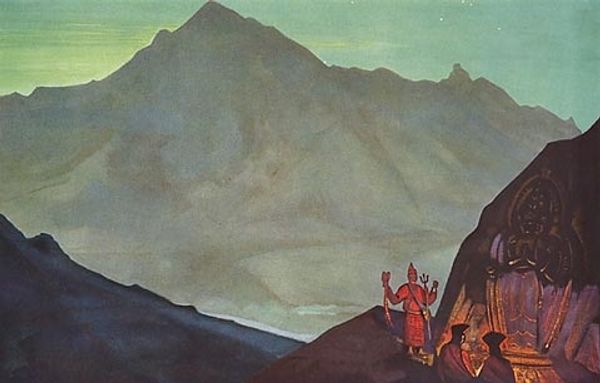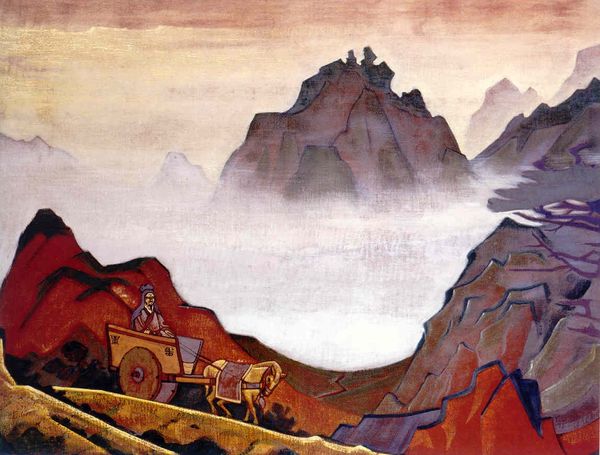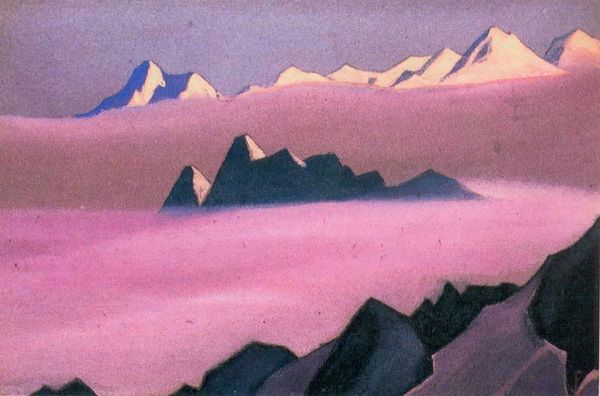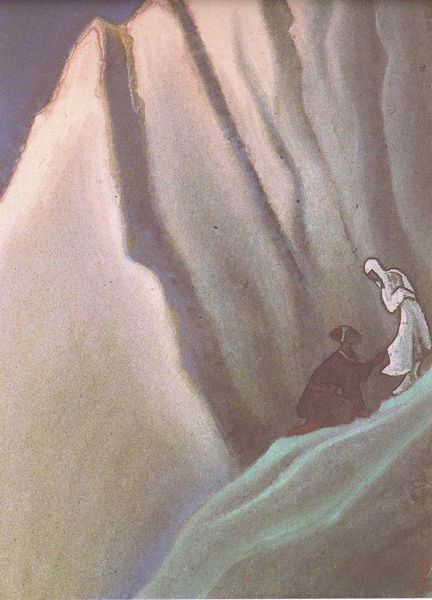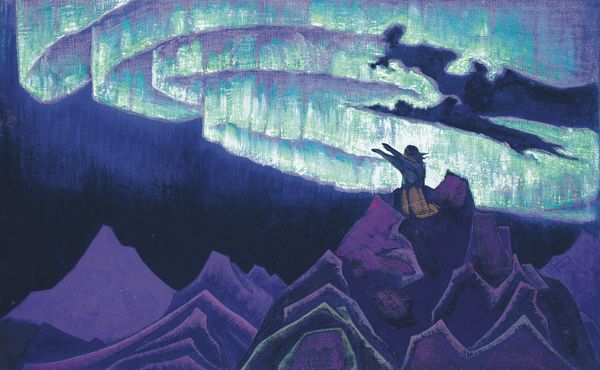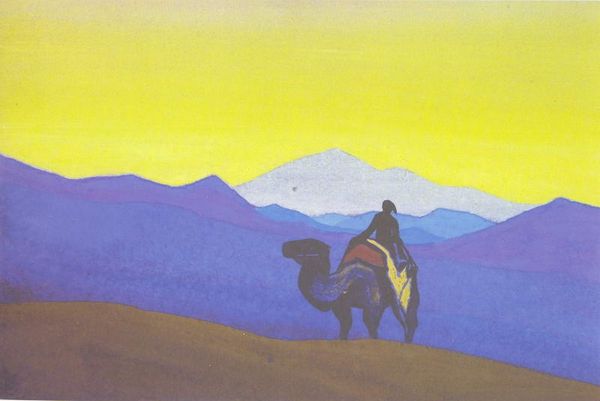
Dimensions: 31 x 46.2 cm
Copyright: Public domain
Curator: Nicholas Roerich, a painter known for his spiritual and symbolic landscapes, completed this tempera work entitled “Charaka” in 1936. Editor: The first thing that strikes me is the flattened perspective and the palette—muted golds, lavenders, almost an earth-toned monochrome except for that burst of golden ochre in the foreground. Curator: Roerich, deeply influenced by Eastern philosophies, especially Theosophy, often used these visual elements to evoke transcendence. Charaka himself was an ancient Indian physician. He systematized Ayurveda. This places Roerich in the narrative of colonial engagement with India, during the early 20th century where figures like Gandhi impacted him and his work deeply. Editor: Right. The figure seems to almost emerge organically from the landscape itself. His white robes and staff contribute to the visual symbolism; suggesting wisdom, travel, maybe even a link between physical health and spiritual journey. He doesn’t dominate; he’s part of a wider visual grammar. Curator: It’s fascinating how Roerich interweaves that sense of personal, individual significance, and also presents a wide vision of the landscape’s relevance. Notice, too, the deliberate simplification of forms. The mountains, while clearly mountains, are rendered almost as abstract shapes. It’s a strategy he would often employ to move past the purely representational. Editor: Agreed, this moves far beyond simply rendering the external appearance of those mountainous forms. Instead the palette works to evoke the texture of mountains—rough hewn like that gold foreground texture. And consider the orientation, that walking figure almost creates a vector of movement for the viewers’ eye: upwards, into the heavens. Curator: A fitting effect, given Roerich’s syncretic beliefs about nature’s intrinsic spiritual capacity. Roerich really believed this and that impacted how he made the art, it wasn't merely formal application of this philosophy into an aesthetic register. Editor: It is a fascinating meditation on healing, both physically, considering Charaka’s medicinal practice, and spiritually. What a rich encounter for the modern viewer today, allowing insight into the layered understanding of life. Curator: Absolutely. Hopefully listeners will examine more closely these qualities and contextual meanings when they encounter it here at the Novosibirsk State Museum of Fine Arts. Editor: Agreed. It really illustrates the potency of artistic language to render the most complex of philosophies.
Comments
No comments
Be the first to comment and join the conversation on the ultimate creative platform.
